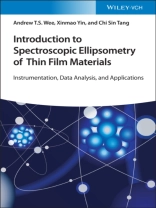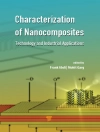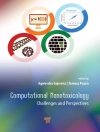A one-of-a-kind text offering an introduction to the use of spectroscopic ellipsometry for novel material characterization
In Introduction to Spectroscopic Ellipsometry of Thin Film Materials: Instrumentation, Data Analysis and Applications, a team of eminent researchers delivers an incisive exploration of how the traditional experimental technique of spectroscopic ellipsometry is used to characterize the intrinsic properties of novel materials. The book focuses on the scientifically and technologically important two-dimensional transition metal dichalcogenides (2D-TMDs), magnetic oxides like manganite materials, and unconventional superconductors, including copper oxide systems.
The distinguished authors discuss the characterization of properties, like electronic structures, interfacial properties, and the consequent quasiparticle dynamics in novel quantum materials. Along with illustrative and specific case studies on how spectroscopic ellipsometry is used to study the optical and quasiparticle properties of novel systems, the book includes:
- Thorough introductions to the basic principles of spectroscopic ellipsometry and strongly correlated systems, including copper oxides and manganites
- Comprehensive explorations of two-dimensional transition metal dichalcogenides
- Practical discussions of single layer graphene systems and nickelate systems
- In-depth examinations of potential future developments and applications of spectroscopic ellipsometry
Perfect for master’s- and Ph D-level students in physics and chemistry, Introduction to Spectroscopic Ellipsometry of Thin Film Materials will also earn a place in the libraries of those studying materials science seeking a one-stop reference for the applications of spectroscopic ellipsometry to novel developed materials.
Tabella dei contenuti
Preface ix
1 Spectroscopic Ellipsometry: Basic Principles 1
1.1 Spectroscopic Ellipsometry 1
1.1.1 p- and s-Polarized Lights and Fresnel Coefficients 2
1.1.2 Representation of Polarized Lights 3
1.2 Principles of Ellipsometric Measurements 5
1.2.1 Rotating-Analyzer Ellipsometer 6
1.3 Experimental Setup 7
1.3.1 VASE Spectroscopic Ellipsometer 8
1.3.2 IR-VASE Spectroscopic Ellipsometer 9
1.4 Spectroscopic Ellipsometry: General Profiles 10
1.5 Ellipsometric Data for Multilayered System 11
1.6 Dielectric Models 12
1.6.1 Drude Model 13
1.6.2 Lorentz Model 14
1.6.3 Drude–Lorentz Model 16
1.6.4 Sellmeier and Cauchy Models 17
1.7 Chapter Summary 18
References 18
2 Strongly Correlated Systems: Cuprates and Manganites 19
2.1 Introduction 19
2.2 High-Transition-Temperature Superconducting Cuprates 19
2.2.1 The Crystalline Structure of Cuprates 20
2.2.1.1 The Structure of La1−x Srx Cu O4 20
2.2.1.2 The Structure of YBa2Cu3O7−δ 20
2.2.1.3 The Structure of Nd2−x Cex Cu O4 21
2.2.2 The Electronic Structure of Cuprates 22
2.3 Colossal Magnetoresistance Manganites 26
2.3.1 Crystal Structure of La1−x Srx Mn O3 26
2.3.2 The Electronic Structure and Magnetism of LSMO 26
2.3.3 Strong and Weak Correlations in Ambipolar Cuprate Thin-Film Systems 28
2.3.4 Samples 29
2.3.5 Spectroscopic Ellipsometry 31
2.4 Charge Localization in Cuprate Thin Film on Oxide Substrate 37
2.5 Plasmon and High-Energy Exciton Excitations in Cuprate Thin Films 40
2.5.1 Observation of the Low- and High-Energy Plasmons in LSCO/STO Film 40
2.5.2 Observation of the High-Energy Excitons in the LSCO/STO Film 43
2.6 Jahn–Teller Splitting Energy Controls the Phase Transition in Manganite Thin-Film Systems 45
References 49
3 Two-Dimensional Transition Metal Dichalcogenides 59
3.1 Introduction 59
3.2 Crystal Structures of 2D-TMDs 59
3.2.1 1H-Phase 60
3.2.2 1T and 1T′ -Phase 61
3.2.3 1H–1T′ -Phase Energetics 61
3.2.4 Arising Electronic Structures 61
3.2.4.1 Indirect-to-Direct Bandgap Transition 61
3.2.4.2 Spin–Orbit Splitting 62
3.2.4.3 1T′ -Phase Electronic Band Structure 63
3.2.5 2D-TMD: Excitons 64
3.2.5.1 Excitons in 2D-TMDs 65
3.2.5.2 Excitons and Trions 67
3.2.6 Investigative Objectives for 2D-TMDs 67
3.3 Ellipsometry in Probing Structural Phase Transition and Electronic Structures Monolayer-Mo S2 68
3.3.1 Experimental Results 70
3.3.1.1 Sample Preparation 70
3.3.1.2 Optical Features of Monolayer-Mo S2 70
3.3.1.3 Inverted and Fundamental Gaps of 1T′ -Phase 2D-TMDs 71
3.3.2 Dynamics of 1H–1T′ -Phase Transition 72
3.3.2.1 First-Principle Study: Role of Substrates 72
3.3.3 Analyzing the 1H–1T′ -Phase Transition of Mo S2/Cu 75
3.3.3.1 Optical Characterization of Mo S2/Cu 75
3.3.3.2 Raman and PL Characterization 76
3.3.3.3 Photoemission Spectroscopic Characterization 77
3.3.4 1H–1T′ -Phase Transition of WSe2/Au 79
3.3.4.1 Optical Characterization of WSe2/Au 80
3.3.4.2 Photoluminescence and Photoemission Characterization of WSe2/Au 81
3.3.4.3 Phase Transition Yield of 2D-TMDs 84
3.3.5 Section Conclusion 85
3.4 Three-Dimensional Resonant Exciton in Monolayer-WSe2 87
3.4.1 Materials, Methods, and Results 88
3.4.1.1 Sample Growth 88
3.4.1.2 Optical Characterization of Monolayer-WSe2 89
3.4.1.3 Exciton Peaks: Temperature Dependence 92
3.4.1.4 Fitting Parameters of ????2 Spectra 94
3.4.2 Effects of Temperature on SOC in 2D TMDs 95
3.4.3 High-Energy Photoluminescence Characterization 97
3.4.4 Power-Dependent Photoluminescence Spectroscopic Study 99
3.4.5 Computational Studies 99
3.4.5.1 High-Energy Resonant Exciton Demonstrated via GW–BSE Calculations 99
3.4.5.2 Comparison Between Wannier–Mott and Resonant Excitons 100
3.4.5.3 Origin of Resonant Exciton: Band Structure Calculations Analysis 101
3.4.6 3D-Features of Resonant Exciton in Monolayer-WSe2 and Thickness Dependence 103
3.4.7 Estimating Exciton Binding Energy 105
3.4.8 Section Summary 105
3.5 Anisotropic Plasmon Excitations in Quasi-Metallic 2D-TMDs 106
3.5.1 Anisotropic Plasmons in 1T′ -Phase 2D-TMDs 107
3.5.1.1 Sample Preparation 107
3.5.1.2 Detection of Plasmon in 1T′ -Phase WSe2/Au 108
3.5.2 One-Dimensional Plasmon in 1T′ -Phase WSe2 110
3.5.3 Detecting Plasmons in 1T′ -Phase Mo S2/Au Monolayer 112
3.5.4 Analyzing One-Dimensional Plasmon in 1T′ -Phase 2D-TMDs 115
3.5.5 1H–1T′ -Phase Transition 116
3.5.6 Section Conclusion 117
References 118
4 Single-Layer Graphene Systems 131
4.1 Introduction 131
4.2 Crystal and Electronic Structure of Graphene 131
4.2.1 Electronic Band Structure of Graphene 132
4.3 Optoelectronic Properties of Graphene 134
4.4 Spectroscopic Ellipsometry Study of Graphene 135
4.4.1 Measurement and Data Analysis of Graphene 135
4.5 Resonant Excitons in Graphene 137
4.6 Substrate-Induced Manipulation of Many-Body Effects 138
4.7 Conclusion and Outlook 141
References 142
5 Nickelate Systems 149
5.1 Introduction 149
5.2 Crystal Structure 149
5.3 Electronic Structures and Ni3d-Orbital Physics 150
5.4 Phase Diagram and Metal–Insulator Transitions of RNi O3 Systems 151
5.4.1 Magnetic Phases in RNi O3 Systems 152
5.5 Optical Characterization via Spectroscopic Ellipsometry 153
5.5.1 Effects of Epitaxial Effects on the Electronic Correlations of Nickelate Thin Films 154
5.5.2 Long-Range Spin Ordering in Nickelate Thin Films 155
5.6 Conclusion and Outlook 159
References 161
6 Future Development and Applications of Spectroscopic Ellipsometry 167
6.1 Development of Mueller Matrix Imaging Techniques in Spectroscopic Ellipsometry 167
6.2 In Situ Analysis of Langmuir Monolayers 169
6.3 Emergent Properties at Two-Dimensional Interfaces 170
6.4 Micro Devices and Integrated Circuits 171
6.5 Metamaterial Research 172
6.6 Organic Electronics 172
6.7 Biological Materials and Medicines 173
6.8 Anisotropic Materials 173
6.9 Process Control Analysis 173
References 174
Index 181
Circa l’autore
Andrew T.S. Wee, DPhil, is Professor of Physics and Director of the Surface Science Laboratory at the National University of Singapore (NUS). His research is focused on surface and nanoscale science, scanning tunnelling microscopy, and synchrotron radiation studies of the molecule-substrate interface.
Xinmao Yin, Ph D, is Professor of Physics at the Shanghai University, China. His research is focused on quantum materials and broad energy range optical spectroscopic techniques.
Chi Sin Tang is scientist at the Institute of Materials Research and Engineering, Agency for Science Technology and Research (A*STAR), Singapore. His research is focused on the electronic and optical properties of low-dimensional materials.












